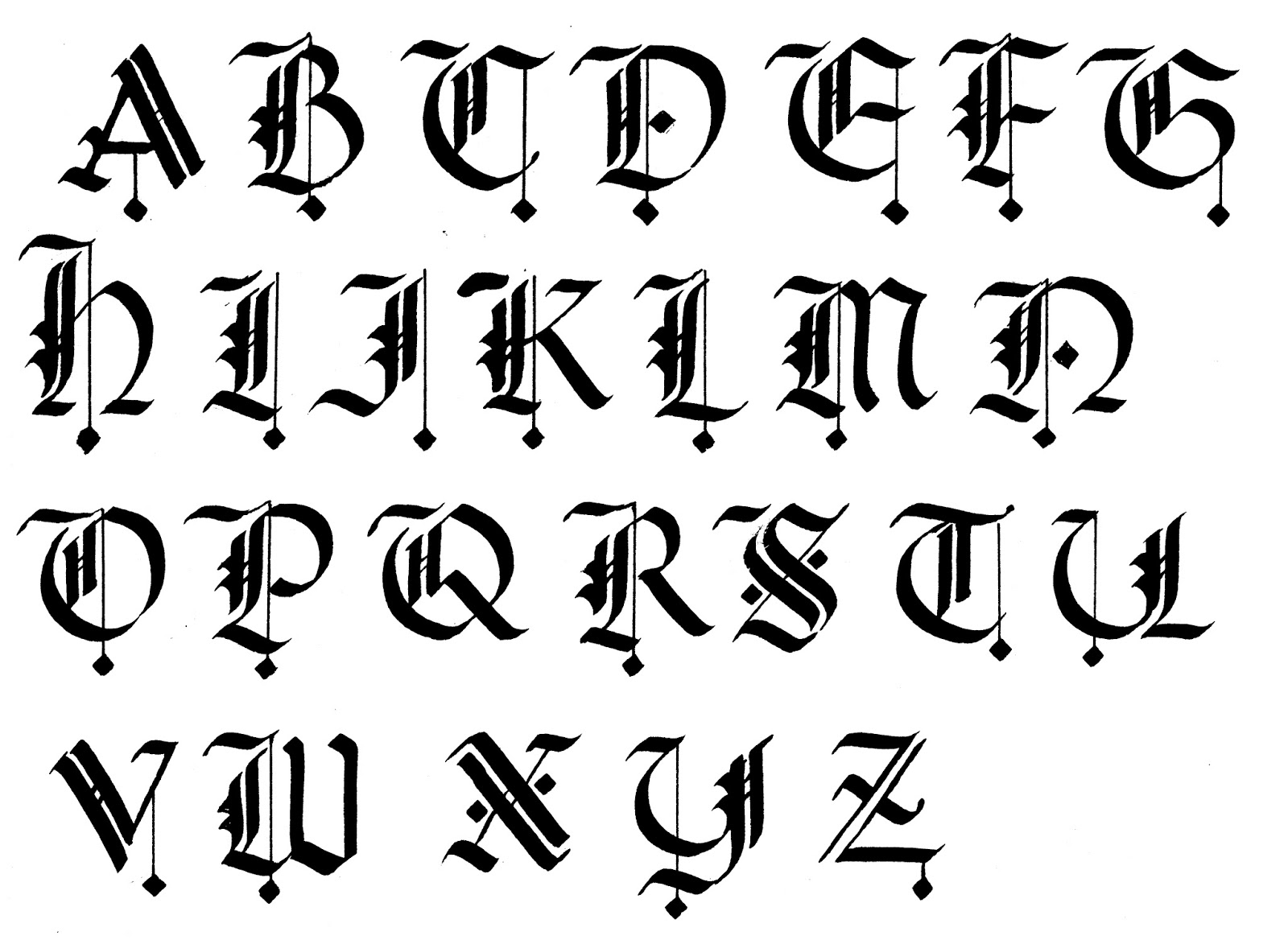Gothic calligraphy represents a captivating blend of history, artistry, and technique that has fascinated people for centuries. This intricate form of writing, characterized by its angular shapes and elaborate flourishes, traces its roots back to the Middle Ages. In this article, we will delve into the rich history, key characteristics, and practical applications of Gothic calligraphy, while also exploring techniques for mastering this beautiful art form.
Whether you are an artist seeking inspiration or simply someone intrigued by the beauty of written language, this article will serve as a comprehensive guide to Gothic calligraphy. Join us as we unravel the complexities of this timeless craft and discover how it continues to thrive in the modern world.
Table of Contents
- 1. History of Gothic Calligraphy
- 2. Key Characteristics of Gothic Calligraphy
- 3. Essential Tools for Gothic Calligraphy
- 4. Different Styles of Gothic Calligraphy
- 5. Techniques for Mastering Gothic Calligraphy
- 6. Applications of Gothic Calligraphy
- 7. Resources for Learning Gothic Calligraphy
- 8. Conclusion
1. History of Gothic Calligraphy
The origins of Gothic calligraphy date back to the 12th century during the Gothic period in Europe. This style emerged as a response to the Romanesque script, which was characterized by its rounded and flowing forms. The introduction of the Gothic script brought about a revolution in written communication, with its sharp angles and verticality reflecting the architectural innovations of the time.
Gothic calligraphy was primarily used for religious texts, manuscripts, and official documents. Monasteries became centers of learning and artistry, where scribes meticulously copied texts, often embellishing them with intricate designs and illustrations. The popularity of Gothic calligraphy continued to grow, especially in the 14th and 15th centuries, when it was used in various forms, including textura, bastarda, and rotunda.
As the Renaissance approach to art and writing began to take hold, the use of Gothic calligraphy started to decline. However, its influence can still be seen in modern typography and design, as contemporary artists draw inspiration from its rich history and unique aesthetic.
2. Key Characteristics of Gothic Calligraphy
Gothic calligraphy is distinguished by several key characteristics that set it apart from other writing styles. Understanding these features is essential for anyone looking to master this art form:
- Angular Forms: The letters are composed of sharp angles and vertical lines, creating a distinctive look.
- Dense Lettering: Gothic calligraphy often features tightly packed letters, which can give the text a bold appearance.
- Flourishes and Decorations: Scribes frequently added ornate flourishes and embellishments to enhance the beauty of the text.
- Contrast: The contrast between thick and thin strokes adds depth and visual interest to the writing.
3. Essential Tools for Gothic Calligraphy
To begin practicing Gothic calligraphy, several essential tools are required:
- Calligraphy Pens: Broad-tipped pens or nibs are ideal for creating the thick and thin strokes characteristic of Gothic letters.
- Ink: Quality ink, either bottled or in a fountain pen, is necessary for achieving smooth lines.
- Paper: Choose smooth paper that can handle the ink without bleeding or feathering.
- Ruler and Pencil: These tools are helpful for creating guidelines and maintaining consistent letter height.
4. Different Styles of Gothic Calligraphy
Gothic calligraphy encompasses various styles, each with its own unique characteristics:
4.1 Textura
Textura is one of the most recognizable Gothic styles, featuring tightly packed letters and a grid-like appearance. This style is often found in illuminated manuscripts and religious texts.
4.2 Bastarda
Bastarda is a more fluid and less rigid style compared to textura. It allows for greater expressiveness and is often used in personal correspondence.
4.3 Rotunda
Rotunda is characterized by rounded letters and is considered more legible than other Gothic styles. It was commonly used in Italy during the Renaissance.
5. Techniques for Mastering Gothic Calligraphy
To become proficient in Gothic calligraphy, consider the following techniques:
- Practice Basic Strokes: Begin by practicing the basic strokes that form the letters. Focus on achieving consistent thickness and angles.
- Use Guidelines: Draw light guidelines to help maintain uniform letter height and spacing.
- Study Historical Examples: Analyze historical manuscripts to understand how skilled calligraphers approached their work.
- Experiment with Styles: Try different styles of Gothic calligraphy to discover your preferences and strengths.
6. Applications of Gothic Calligraphy
Gothic calligraphy is not only a form of artistic expression but also has practical applications:
- Wedding Invitations: Many couples choose Gothic calligraphy for elegant and timeless wedding invitations.
- Art Prints: Artists often create prints featuring Gothic quotes or phrases, combining visual art with calligraphy.
- Personal Stationery: Customized stationery featuring Gothic calligraphy adds a unique touch to correspondence.
7. Resources for Learning Gothic Calligraphy
For those interested in learning more about Gothic calligraphy, numerous resources are available:
- Books: Look for books specifically focused on calligraphy techniques and history.
- Online Courses: Many platforms offer online courses taught by experienced calligraphers.
- YouTube Tutorials: Video tutorials can provide visual guidance on mastering various techniques.
8. Conclusion
In summary, Gothic calligraphy is a captivating art form with a rich history and a unique aesthetic. By understanding its characteristics, mastering essential techniques, and exploring its applications, anyone can appreciate and engage with this beautiful craft. Whether you are a seasoned artist or a curious beginner, Gothic calligraphy offers endless opportunities for creativity and expression.
We encourage you to leave a comment below sharing your thoughts on Gothic calligraphy or any experiences you may have had with this art form. Don't forget to share this article with others who may find it interesting, and explore our site for more articles on related topics!
As you continue your journey into the world of Gothic calligraphy, remember that practice and patience are key. Embrace the art, enjoy the process, and let your creativity flourish!
Article Recommendations
- Melony Scott Thomas A Remarkable Journey Of Talent And Dedication
- Is Julian Edelman Retired Latest Update
- Frank Thomas Height How Tall Was The Baseball Legend


